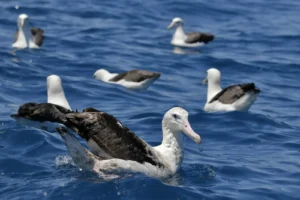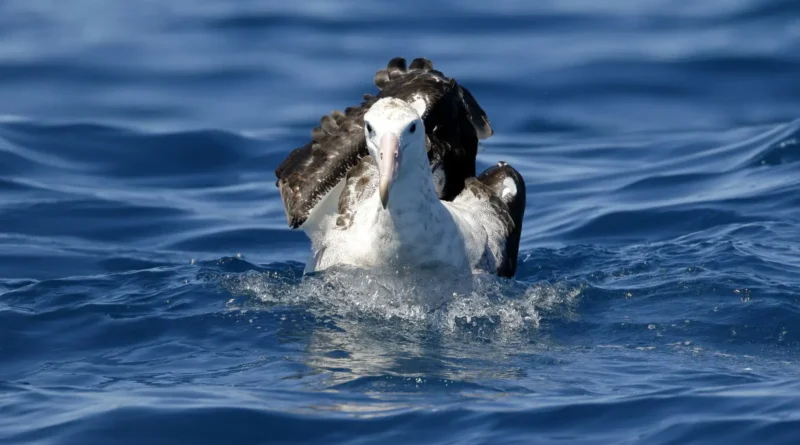The Secret to Albatrosses’ Long Life
Albatrosses, with their impressive wingspans and remarkable lifespans, are among the longest-living birds on Earth. These majestic seabirds, known for their nomadic lifestyle and extensive migrations over the open ocean, have evolved unique adaptations that enable them to thrive in challenging marine environments. Let’s delve into the secrets behind the long life of albatrosses and unravel the mysteries of their evolutionary success.
Introduction: The Enigmatic Albatross
Albatrosses belong to the family Diomedeidae and comprise several species that inhabit the Southern Ocean and North Pacific. These birds are celebrated for their exceptional flying abilities, with some species capable of traveling thousands of miles in search of food. Despite their prowess in the air, albatrosses face numerous challenges in their oceanic habitats, making their long life spans all the more remarkable.
Evolutionary Adaptations for Longevity
Albatrosses have evolved several physiological and behavioral adaptations that contribute to their longevity:
- Efficient Flight Mechanisms: Albatrosses have incredibly efficient flight adaptations, including large wingspans and specialized wing shapes that allow them to glide effortlessly over the ocean surface for extended periods. This energy-efficient flight strategy reduces the metabolic costs associated with long-distance travel, conserving energy for survival and reproduction.
- Slow Reproductive Rate: Unlike many other birds, albatrosses have a slow reproductive rate, with females typically laying only one egg every one to two years. This reduced reproductive output allows albatrosses to allocate more resources towards self-maintenance and survival, contributing to their longevity.
- Enhanced Foraging Skills: Albatrosses are highly skilled foragers, capable of locating and capturing prey over vast distances. Their ability to efficiently exploit marine resources minimizes the energy expenditure associated with food acquisition, supporting their long-term survival.
- Longevity in the Marine Environment: Albatrosses have evolved physiological adaptations that enable them to thrive in the harsh marine environment. These adaptations include salt glands that allow them to excrete excess salt, specialized feathers for waterproofing, and efficient thermoregulation mechanisms to cope with temperature fluctuations at sea.
Ecological Niche and Predation Pressure

Albatrosses occupy a unique ecological niche as apex predators in the marine food web. Their diet primarily consists of fish, squid, and crustaceans obtained through surface seizing and plunge diving. As top predators, albatrosses play a crucial role in regulating marine ecosystems by controlling prey populations and nutrient cycling.
Despite their position as apex predators, albatrosses face predation pressure from natural predators such as large sharks and predatory seabirds. This selective pressure has likely contributed to the evolution of defensive behaviors and adaptations that enhance their survival and longevity.
Life History Traits and Longevity

The life history traits of albatrosses, including their delayed maturity, extended lifespan, and low reproductive rate, contribute to their remarkable longevity:
- Delayed Maturity: Albatrosses typically reach sexual maturity at several years of age, with some species taking up to a decade to attain breeding status. This delayed maturity allows individuals to invest in growth and development before committing to reproductive activities, enhancing their overall fitness and survival.
- Extended Lifespan: Albatrosses have evolved to live exceptionally long lives compared to other birds. Some species, such as the Laysan Albatross, can live for over 60 years in the wild, highlighting the efficacy of their life history strategies in maximizing longevity.
- Low Reproductive Rate: Albatrosses exhibit a low reproductive rate, with females investing significant time and energy in raising a single offspring over extended periods. This strategy minimizes the risks associated with reproduction and increases the likelihood of offspring survival, contributing to the persistence of albatross populations over time.
Conservation Challenges and Future Outlook
Despite their remarkable longevity, albatrosses face significant conservation challenges, including habitat loss, marine pollution, and bycatch in fishing gear. Several albatross species are classified as endangered or vulnerable due to these threats, underscoring the importance of conservation efforts to protect their populations.
Conservation measures aimed at mitigating threats to albatrosses include the establishment of protected marine areas, the development of sustainable fishing practices, and the implementation of bycatch reduction strategies. Public awareness and advocacy campaigns play a crucial role in promoting responsible stewardship of marine resources and raising awareness about the conservation needs of albatrosses.
Conclusion: Unraveling Nature’s Longevity Secrets
In conclusion, the long life of albatrosses is a testament to the evolutionary adaptations and life history strategies that have allowed them to thrive in the challenging marine environment. By unraveling the mysteries of avian longevity, we gain valuable insights into the intricate connections between ecology, behavior, and survival. As we continue to study and conserve these magnificent seabirds, we not only preserve their legacy but also gain a deeper appreciation for the wonders of nature and the secrets of longevity hidden within the vast expanse of the open ocean.

